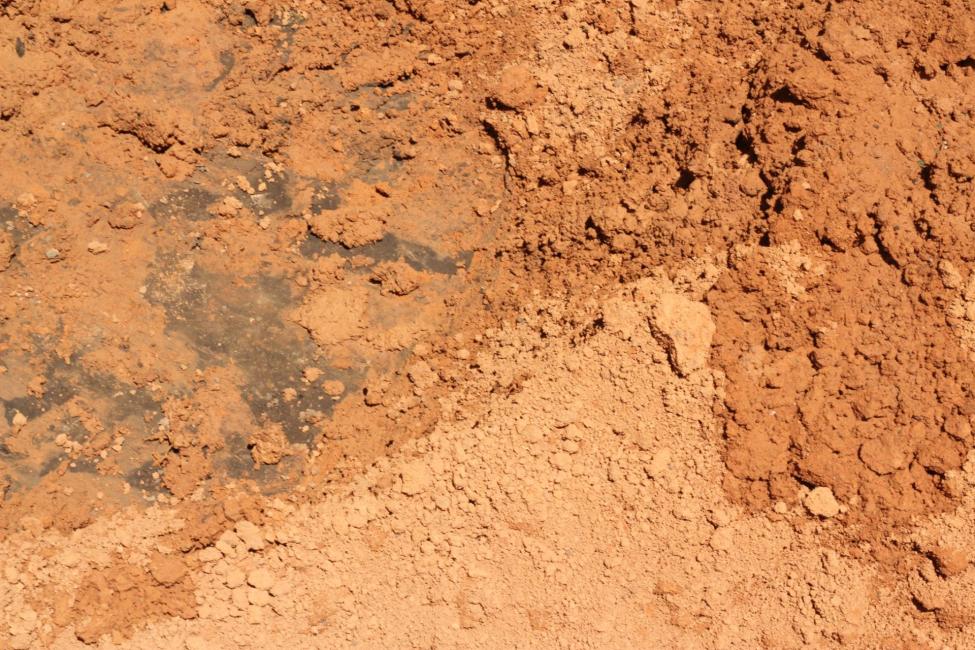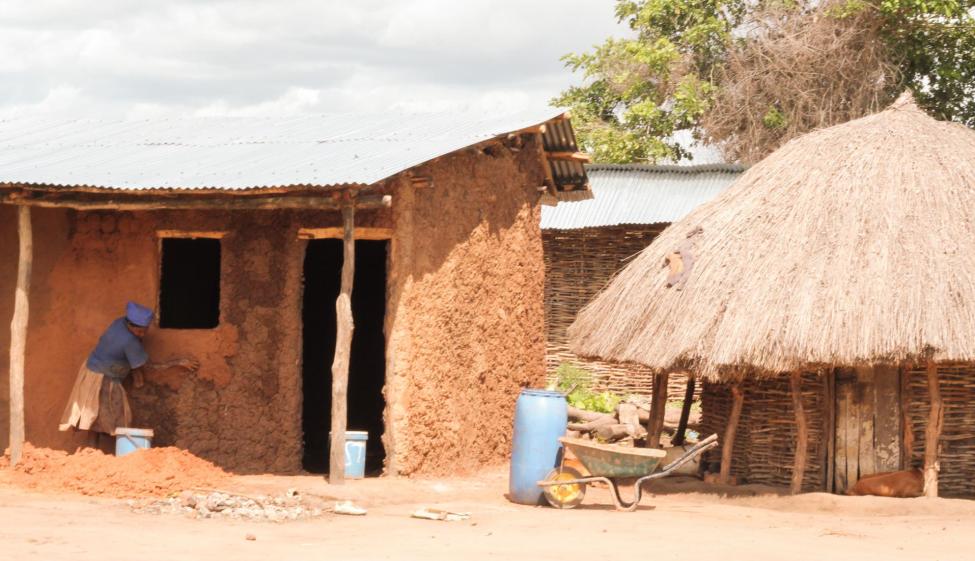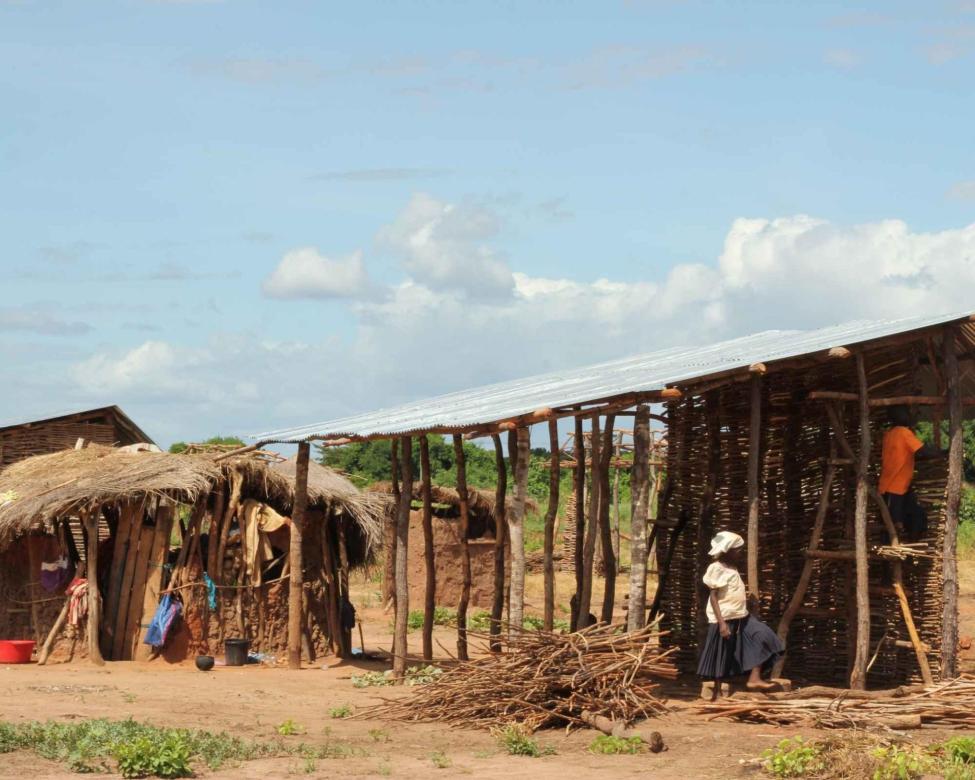-
Who We Are
WHO WE AREThe International Organization for Migration (IOM) is part of the United Nations System as the leading inter-governmental organization promoting since 1951 humane and orderly migration for the benefit of all, with 175 member states and a presence in over 100 countries. IOM has had a presence in Mozambique since 1994.
About
About
IOM Global
IOM Global
-
Our Work
Our WorkAs the leading inter-governmental organization promoting since 1951 humane and orderly migration, IOM plays a key role to support the achievement of the 2030 Agenda through different areas of intervention that connect both humanitarian assistance and sustainable development.
Cross-cutting (Global)
Cross-cutting (Global)
- Data and Resources
- Take Action
- 2030 Agenda
Dombe, Sussundenga - In the resettlement site of Nhamissisua, families have been working to rebuild their lives after being displaced due to Cyclone Eloise in 2021. One of the people at work is Simone Paulo, plastering her family’s new home. She recently moved in with her husband Paulo Filipe and three children. “It has been a big difference compared to our initial shelter where we lived for a year” she immediately says. Before 2020, the family lived not far from their current home. In January 2020, they were warned that a Cyclone was coming and would cause flooding, but they expected it to be at another bank of the Lucite River and stayed at home. However, in the night of 23 January 2021, their village slowly started to flood: “It was not a good experience, water was coming out from below and we had to stay on top of trees and logs until the water went down”. It was the INGD (National Institute for Disaster Risk Management) who came to their house and explained that their house was on a low-level area, and at high risk for recurrent flooding. They decided to move to higher grounds and started rebuilding their lives on an allocated plot in the Nhamissisua resettlement site, a kilometre away from their old home.
Two weeks before we meet the family, Paulo Filipe, the head of the household with support from IOM Shelter Team, started working on the wooden structure of the house and putting on an iron roofing sheet. He was trained on the technique of weaving the wooden poles to form a solid foundation. Neighbours supported putting up the iron roofing sheets.
IOM’s project is based on a cash-for-work approach of which community participation is inclusive at all stages of the project cycle. Starting by their participation on the identification of needs, to the selection of the most vulnerable households and to the construction works. The community is given the opportunity to be part of the construction works at all stages, from site clearing, movement of materials, water collection, carpentry, masonry, supervision, and other community services. Once the activities are identified, the community is organized in construction working groups (CWG) of 3-4 members, consisting of one local artisan that serves as the representative of the CWG. They receive training and tools. An IOM construction team composed of community mobilizers and engineers is assigned to the site for daily progress supervision. Lastly, government engineers are regularly tasked to supervise the overall construction works and provide validation of the technical aspects for resilient constructions.
Simone has now taken over from her husband to put up the final layer of mud plaster on the house. Women are traditionally in charge of this task, as well as further painting and decoration of the house. She continues mixing the red soil with water with her hands, after which she applies the final layer on the walls of the house. The layering will help to keep the heat out during the day, and inside when nights are cold. Simone says: “It is now becoming a good place for us and the children to stay.”
The houses are designed following cost-effective considerations that include adequate use and treatment of local materials, and improvement of traditional construction techniques which shall include build back safer principles such as stronger foundations, stronger connections, and stronger roofs.
The Paulo family’s old emergency shelter where they lived for months is still right next to the new house. The family decided to keep it as it comes in handy for keeping the goats and chickens at night. The difference between the old and new house is easily visible: the new house looks stronger, and has much more space, as well as windows and the option for a door: “with the incentive from IOM we hope to build more houses in the future and maybe earn extra money for food and eventually save up for further additions to the house like a door that can be locked, so we can keep our valuables in the house safely when we go out to our farm” Paulo adds.
After natural disasters occur women and girls are subject to pre-existing inequalities and made more vulnerable to gender-based violence, sexual exploitation, human trafficking, and other health concerns.
A few metres from the Filipe family’s house lives Francisco João. He is working on his family’s new house as well after their house got destroyed by Cyclone Eloise. Their new family home is currently one stage previous to plastering. They received ‘estacas’ – wooden poles, roofing sheets, nails, tools, and training from IOM on the building back better technique, as well as a monetary incentive to do the work. The iron roofing is already up and his three small children are sleeping in the cool shade. Overseeing the work is the head of the family, Veronica Samuel. Her exact age is unknown, as she was born before births were accurately registered but she guesses to be well in her 80s or even 90s. She has seen a lot in her long lifespan, and she is visibly worried about the recurring weather events in the region: “It has affected our homes and farms, and sometimes there is not even enough time to recover their crops before the next cyclone arrives”. She continues to tell how the passing of Cyclone Eloise was particularly traumatizing, as it completely uprooted her and her family’s lives and they had to permanently move.
Leaving behind her previous home has been harsh on Veronica. Her body isn’t as strong as it used to be and she relies on the help of her family and neighbours to rebuild. But everyone else has also been busy rebuilding their own lives too and her adult children spend most of their days farming corn and sorghum. So for the past few months she has been living in a small shelter put together from whichever material they could find in the nearby area. The roof is fragile and the walls have many gaps. She was prioritized by the IOM Shelter team to receive better housing, as the circumstances were not dignified, especially for someone her age.
The new house will be much more spacious and the new roof is almost twice as high, allowing Veronica to stand up straight in her home while doing chores and taking care of her grandchildren. While she hands Francisco’s a few more estacas she says: “the great thing about this location is that it is higher up and already withstood the last harsh rains and storms, and it is proven to not flood. The iron roofing sheets will make a big difference for the next rainy season, we feel much safer already.”
IOM is one of the few actors that is providing integral shelter assistance to the communities affected by natural disasters and conflict in Mozambique: from emergency phase, through early recovery and to durable solutions. To date, IOM has assisted more than 50,000 families with NFIs, 16,000 families with emergency shelters, 4,000 families with early recovery and 1,343 families with Durable Solutions.
The above story is one of those successful stories where IOM has supported the affected families with early recovery shelter solutions that go beyond emergency. In 2022, a total 3,015 people (603 families) have received shelter materials, tools, and technical support to enable their shelter recovery in the resettlement sites of Maquina, Muchai and Nhamissisua in Sussundenga district (Manica province) and in the resettlement sites of Bopira and Mussinemue in the district of Buzi (Sofala province). The selected families are identified in coordination with the community and local leader and based on vulnerability criteria such as elderly, pregnant, and lactating women, single headed households and the state of their original shelter.
Mozambique is one of the countries at most risk of climate change, and the central region especially sees an increased frequency, intensity, and unpredictability of extreme weather events. Though shelter early recovery solutions (transitional shelters) offer better living conditions than those provided during emergency. Financing durable solutions (permanent housing) and adaptation to climate change is urgent and will be more cost-effective than financing increasingly frequent and severe crisis response, disaster relief, and recovery pathways.
Funding: Foreign Commonwealth and Development Office (FCDO); Bureau For Humanitarian Assistance (BHA)








